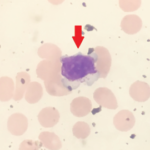She emphasizes to Reuters Health that the Italian study is based on “a very select population of women, referred specifically for the diagnosis and treatment of osteoporosis … not the general population of postmenopausal women.”
The only reason to identify asymptomatic vertebral fractures, says Dr. Ensrud, who also was not involved in the new research, “is for clinical decision making about whether or not to start drug treatment (typically bisphosphonates) to reduce risk of future clinical fracture events.”
“Whether or not to use drug treatment in younger postmenopausal women is a matter of debate, especially when there is accumulating evidence that rare but serious harms of treatment (atypical femoral fractures) is related to duration of use of bisphosphonates and other potent antiresorptive drugs,” she adds.
Dr. Ensrud notes that because “71% of the study population met criteria for drug treatment based on BMD alone, I am not sure whether getting spine films identified a much larger proportion of women as candidates for treatment above and beyond that identified using BMD measurement alone.”
Reference
- Pizzato S, Trevisan C, Lucato P, et al. Identification of asymptomatic frailty vertebral fractures in post-menopausal women. Bone. 2018 Aug;113:89–94. Epub 2018 May 9.

